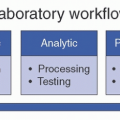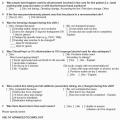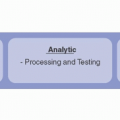Hepatitis B Vaccine
Background Since the implementation of national hepatitis B vaccination program for all newborns, the incidence of acute hepatitis B virus (HBV) infection in the United States has declined markedly. From 1990 to 2009, the rate of new HBV infections declined ˜84%, from 8.5 to 1.1 cases per 100 000 population.
44 The current incidence of acute HBV infection in the United States has been fluctuating around 3000 cases annually since 2012 with an estimate of 1.0 reported cases per 100 000 population.
45 Chronic HBV infection remains a public health challenge with an estimated prevalence as high as 2.2 million in the United States.
46
Healthcare-Associated Exposures HBV has long been recognized as an occupational hazard for HCP in the United States and globally. Occupational transmission of HBV infection to HCP generally occurs through percutaneous, mucosal, and nonintact skin exposures to infected blood or other infectious body fluids.
47,48 It is estimated that 385 000 percutaneous injuries occur in US hospitals each year.
47 Previous studies found the risks of developing clinical hepatitis and serologic evidence of HBV infection among HCP who sustained a needle injury were 22%-31% and 37%-62%, respectively, if exposed to needles contaminated with blood positive for both hepatitis B surface antigen (HBsAg) and hepatitis B e-antigen (HBeAg).
48,49,50 By comparison, the risk of developing clinical hepatitis and serologic evidence of HBV infection was lower, 1%-6% and 23%-37%, respectively, if exposed to blood positive for HBsAg and negative for HBeAg.
48,49,50 Contaminated environmental surfaces and medical instruments have also been reported as potential sources for occupational transmission of HBV.
48,49,51,52,53,54 HBV can persist well in the environment, able to survive drying and storage at 25°C and 42% relative humidity for at least 1 week.
51 The virus is transmissible even in the absence of visible blood.
48
Many outbreaks of healthcare provider-to-patient transmission of hepatitis B have been described.
55,56,57,58,59,60 Transmission typically occurred during an invasive procedure, with the most important risk factors being HBeAg positivity of the HCP, degree of invasiveness of the procedure, the infected HCP not wearing gloves, or injury (often inapparent) to the infected HCP.
Vaccination Hepatitis B vaccines currently licensed in the United States are single-antigen hepatitis B vaccines, which include two conventional recombinant HBsAg vaccines (ie, Recombivax-HB and Engerix-B) and a new recombinant HBsAg vaccine with a novel immunostimulatory adjuvant (ie, Heplisav-B). The usual vaccination schedule consists of a three-dose series of Recombivax HB or Engerix-B at 0, 1, and 6 months or a two-dose series of Heplisav-B at 0 and 1 month.
12,23,24 The conventional hepatitis B vaccines are equally immunogenic and are interchangeable; either can be used (in its recommended dose) to complete an immunization series begun with the other.
61 Studies have shown Heplisav-B vaccine is more immunogenic; 90%-100% achieved seroprotective hepatitis B surface antibody (anti-HBs) levels as compared to 70%-90% with Engerix-B vaccine.
62,63,64 However, there were higher rates of cardiovascular and immune-mediated adverse events associated with Heplisav-B vaccine. Immunogenicity is not reduced when hepatitis B vaccine is given with other vaccines. Pregnancy is not a contraindication to hepatitis B vaccine. In general, seroprotective titers for hepatitis B develop after vaccination in 92% of HCP aged <40 years and 84% aged ≥40 years.
12,23,49
A U.S. Federal Standard issued under OSHA in 1991, based on ACIP recommendations, mandated that all HCP with risks for occupational exposure be offered hepatitis B immunization at the employer’s expense.
12,23,49 Employees may refuse immunization but must sign a declination form. Employees who decline hepatitis B vaccine cite a desire to avoid medications, the perception that they are at low risk for occupationally acquired HBV infection, and
concern about vaccine side effects.
65 Availability of educational materials directed at these issues may be helpful in addressing concerns that could lead to refusal.
The use of HBV vaccine among HCP, coupled with improved infection prevention practices through institution of Standard Precautions and other preventive measures such as needleless devices and safety needles and syringes (eg, self-sheathing needles), has markedly reduced the risk of occupational acquisition of HBV infection.
66 The revised Needlestick Safety and Prevention Act of 2001 by the OSHA requiring evaluation, identification, and implementation of safer medical devices has decreased percutaneous injuries from 39.6 injuries per 100 occupied beds in 1999 to 19.5 injuries per 100 occupied beds in 2011.
52,53 The number of occupational HBV infections among HCP has declined ˜98%, from an estimated 17 000 in 1983 to 263 cases of acute HBV infection in 2010.
49,50All unvaccinated HCP, or those with incomplete hepatitis B vaccine series, who are at risk for exposure to blood or infectious body fluids should receive a complete hepatitis B vaccine series.
12 HCP at ongoing risk for percutaneous or mucosal exposures should have an anti-HBs titer obtained 1-2 months after the final dose of vaccine. A postvaccination anti-HBs titer of ≥10 mIU/mL is considered immune. Postvaccination serologic antibody testing for HCP at low risk for HBV exposure may not be cost-effective; they can be tested at the time of an exposure.
For HCP who did not respond (anti-HBs titers <10 mIU/mL) to a primary vaccination series, revaccination with an additional vaccine dose followed by anti-HBs testing in 1-2 months is recommended. If postvaccination anti-HBs titers remain <10 mIU/mL after the receipt of an additional vaccine dose, two additional vaccine doses should be provided followed by serologic antibody testing in 1-2 months after the last dose of vaccine.
49 An adequate antibody response rate was seen in 15%-25% and in ˜50% after one and three additional doses, respectively.
67 If seroprotection is not achieved following the revaccination series, the HCP should be considered a nonresponder. The ACIP does not recommend more than two vaccine series in nonresponders. Nonresponders should have HBsAg and hepatitis B core antibody (anti-HBc) testing to ensure not HBV infected.
49 Nonresponders who are not HBV infected are considered to be susceptible to HBV infection, but no work restrictions are needed. If HCP are found to be HBsAg positive, they should be counseled on prevention of HBV transmission and referred for further evaluation. Recommendations for management of HCP infected with a bloodborne pathogen have been made by the CDC, the Society for Healthcare Epidemiology of America (SHEA), and the Public Health Agency of Canada.
49,68,69Postexposure Vaccination Evaluation of the need for postexposure prophylaxis in HCP should be performed immediately after any percutaneous, mucosal, or nonintact skin exposure to blood or body fluids in the workplace.
23 For HCP with a complete vaccine series and a documented anti-HBs ≥10 mIU/mL, no postexposure vaccine or hepatitis B immune globulin (HBIG) is indicated regardless of the source patient’s HBsAg status.
23
For HCP who are nonresponders after two complete hepatitis B vaccine series, two doses of HBIG (given 4 weeks apart) are recommended after an unprotected exposure to blood or body fluid from a source patient with a positive HBsAg.
23HCP with an unknown response after a complete hepatitis B vaccine series should be tested for anti-HBs titers at the same time as source patient testing to determine source patient’s HBsAg status.
23 If HCP have an anti-HBs <10 mIU/mL and source patient’s HBsAg is positive, one dose of HBIG and revaccination with a complete hepatitis B vaccine series are recommended. Postvaccination anti-HBs serologic testing should be performed 1-2 months after the final dose of vaccine. If HCP have an anti-HBs <10 mIU/mL and the source patient is HBsAg-negative, an additional hepatitis B vaccine is recommended followed by postvaccination anti-HBs serologic testing 1-2 months later so that the HCP immune status will be known for subsequent exposures.
23 For HCP with anti-HBs ≥10 mIU/mL, no postexposure prophylaxis is necessary regardless of the source HBsAg status.
23For unvaccinated HCP or those with incomplete vaccination series, postexposure serology testing of anti-HBs status is not recommended. If the source patient is HBsAg positive, one dose of HBIG and revaccination with a complete hepatitis B vaccine series are recommended.
23 Postvaccination anti-HBs serologic testing should be performed 1-2 months after the final dose of vaccine. If the source patient is HBsAg negative, HCP should still complete the hepatitis B vaccine series according to the ACIP vaccine schedule, followed by anti-HBs serologic testing 1-2 months after the final vaccine dose.
23







